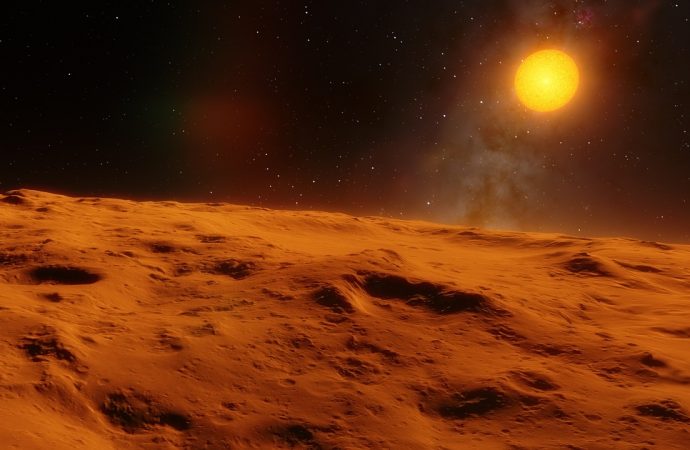TRAPPIST-1:
Way back in February of this year, the planetary system known as “TRAPPIST-1” was released to the public and has been exciting exoplanetary scientists ever since. The basics of this exoplanetary system are illustrated in the figures below:


TRAPPIST-1 and Panspermia
Lingam and Loeb just published a paper describing mathematically the likelihood that life, should it exist on one of the TRAPPIST-1 worlds, may be able to “island-hop” between the other worlds via impact debris that is thrown into space during impact events.
This “island hop” hypothesis rests on the premise that life may exist on one of the TRAPPIST-1 worlds and there is either some rocky or icy material, in the form of asteroids and comets, that is available to impact the life-harbouring world. It is predicted that it is up to 1,000 times more likely for life to be able to “island-hop” about the TRAPPIST-1 worlds than it is for life to do the same between Earth and Mars – under the most optimistic conditions – the model suggests.
In other words, if we ever do end up finding life on one of the TRAPPIST-1 worlds then we can expect to find evidence of that life on at least one of the other, nearby worlds (assuming more than one habitable world in that system).
Source: Manasvi Lingam & Abraham Loeb. (2017) “Enhanced interplanetary panspermia in the TRAPPIST-1 system.” PNAS; arXiv:1703.00878v2
TRAPPIST-1h orbital characteristics confirmed by K2
The Kepler Space Telescope, since retired from scanning the tiny area of space within the Cygnus constellation and now delegated to scanning (and confirming) stars with transiting worlds closer to home, has recently taken a glance at the TRAPPIST-1 system to help confirm the data acquired initially by the Spitzer telescope.
Rodrigo Luger used an orbital resonance pattern that appears to exist between the seven exoplanets to pin down the orbital period of the outermost world – to 18.77 days. He also noted that this orbital resonance could prove instrumental in understanding the physical and mathematical mechanics behind planetary migration because it is suggested that the TRAPPIST-1 orbital resonance pattern was set into place fairly early in the system’s existence.
Source: Rodrigo Luger et al. (2017) “A seven-planet resonant chain in TRAPPIST-1.” Nature Astronomy 1, 0129; doi: 10.1038/s41550-017-0129.
The latest on Proxima b
The “Pale Red Dot” is receiving its very own climate forecast, thanks to some advanced computer modeling being done by a team led by Dr. Ian Boutle. The results so far are that Proxima b is able to host habitable regions on its surface even if tidally-locked and especially granted the flared nature of its host star. They also noted that the habitable areas of Proxima b increase in size/number if the world orbits in a 2:3 resonance like Mercury (i.e., completes two orbits about its star in the span of three of its days). Moreover, its orbit is more elliptical – also like Mercury’s orbit.
Source: : Ian A. Boutle et al. (2017) “Exploring the climate of Proxima B with the Met Office Unified Model.” A&A 601, A120; arXiv:1702.08463v1
SETI 2.0 – the “Breakthrough Listen” project
A quick word on the next big thing in listening for extraterrestrial communications: The “Breakthrough Listen” program is making use of three large radio telescope arrays (Green Bank Telescope, Automated Planet Finder, and Parkes Telescope) to scan the skies above for any potential extraterrestrial signals sent our way. Of the petabytes of data collected so far, 11 apparently stood out as requiring further analysis – only to be determined as being unlikely to be artificial in nature. Better luck next time….
Source: Emillio Enriquez et al. (2017) “The Breakthrough Listen Search for Advanced Life: 1.1 – 1.9 GHz Observations of 692 Nearby Stars.” ApJ, in press.





